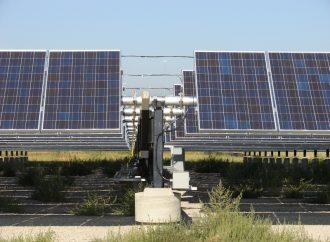What Does the Constitution Mean by “Natural Born Citizen?”
- December 4, 2023

An increasingly common theme of the energy policy debate here in Colorado, particularly among renewables advocates, is the trumpeting of cost statistics purporting to show the affordability benefits of transitioning to wind and solar over legacy fossil fuel plants. Take, for instance, a recent statement made by Governor Jared Polis during a gubernatorial debate late
READ MORE
Rebuffing President Biden’s past hat-in-hand requests for the region to boost production, the 23-member OPEC+ announced this week their intention to slash output by 2 million barrels of oil a day. The move immediately drew the ire of the Biden administration, who is all too aware of what a drastic cut to the global oil
READ MOREEnvironmentalists advocate wind power as one of the main alternatives to fossil fuels, claiming that it is both cost effective and low in carbon emissions. This study seeks to evaluate these claims.
Existing estimates of the life-cycle emissions from wind turbines range from 5 to 100 grams of CO2 equivalent per kilowatt hour of electricity produced. This very wide range is explained by differ- ences in what was included in each analysis, and the proportion of electricity generated by wind. The low CO2 emissions estimates are only possible at low levels of installed wind capacity, and even then they typically ignore the large proportion of associated emissions that come from the need for backup power sources (“spinning reserves”).
Wind blows at speeds that vary considerably, leading to wide variations in power output at different times and in different locations. To address this variability, power supply companies must install backup capacity, which kicks in when demand exceeds supply from the wind turbines; failure to do so will adversely affect grid reliability. The need for this backup capacity significantly increases the cost of producing power from wind. Since backup power in most cases comes from fossil fuel generators, this effectively limits the carbon-reducing potential of new wind capacity.
The extent to which CO2 emissions can be reduced by using wind power ultimately depends on the specific characteristics of an existing power grid and the amount of additional wind-induced vari- ability risk the grid operator will tolerate. A conservative grid operator can achieve CO2 emissions reduction via increased wind power of approximately 18g of CO2 equivalent/kWh, or about 3.6% of total emissions from electricity generation.
The analysis reported in this study indicates that 20% would be the extreme upper limit for wind penetration. At this level the CO2 emissions reduction is 90g of CO2 equivalent/kWh, or about 18% of total emissions from electricity generation. Using wind to reduce CO2 to this level costs $150 per metric ton (i.e. 1,000 kg, or 2,200 lbs) of CO2 reduced.
READ MOREby Donovan Schafer In a recent report, the EPA linked groundwater contamination in Pavillion, Wyoming, to the controversial practice of hydraulic fracturing (“fracking”) used to extract oil and gas. You can almost hear the collective “Hooray!” from anti-fracking advocates. But the actual data in the EPA report make it clear that fracking is safe. The
READ MOREArchive Preview of October 25 PUC Hearing Review of October 25 PUC Hearing Preview of October 26 PUC Hearing: A New Plan Yesterday at 5pm, Xcel filed a new plan to meet HB 1365. The utility’s original plan had been rejected by the PUC because it would have switched fuels at a 351 megawatt Denver
READ MOREReview of October 25 PUC Hearing on HB 1365 As I explained this morning, Xcel today filed a new plan to comply with HB 1365, the controversial 2010 law to meet all “reasonably foreseeable” state and federal air quality regulations. The PUC rejected Xcel’s original plan because it would have replaced a 351 megawatt Denver
READ MORE